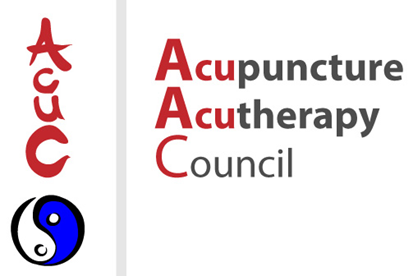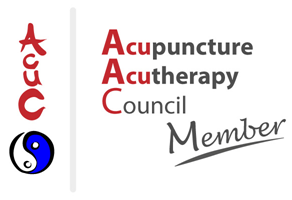Acupuncture
Quick Navigation
- What is Acupuncture?
- What Conditions does Acupuncture Treat
- Traditional Chinese Acupuncture
- Five Element Acupuncture
- Japanese Acupuncture
- Master Tung Acupuncture
- Si Yuan Balance Method (Dr Tan) Acupuncture
- Scalp Acupuncture
- Korean Acupuncture
- Electro Acupuncture
- Cosmetic Acupuncture
- Western Medical Acupuncture
- Cupping
What is Acupuncture?
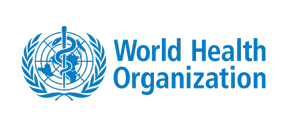
The World Health Organisation (WHO) has been responsible for controlled clinical trials of acupuncture therapy for a wide range of different medical conditions - click here to read extract
"Acupuncture is the insertion of a solid disposable needles into accurate, specific acu-points along the energy
channels to systematically balance and harmonize the flow and functions of the intrinsic energies (Qi) of the human body.
This is fundamental to the practice of acupuncture in Chinese Medicine & other styles for treatment, disease prevention or maintenance
of health." Maria Mercati ©
What is an Acupuncture Practitioner
A fully qualified acupuncturist is able to give a specialist traditional Chinese medical diagnosis and a prescribe treatments that can be effectively used for a wide range health issues.

What conditions can Acupuncture treat?
- Pain anywhere in the body
- Weakened immune systems that result in allergies and susceptibility to disease
All musculo-skeletal conditions
- Neck and Back pain
- Slipped Disc, Sciatica, Sacro–iliac pain
- Knee conditions, Tennis Elbow, RSI, Frozen Shoulder
- Pain due to Muscle, Tendon and Joint Injuries
- Sports Injuries
- Osteo and Rheumatoid Arthritis
- Post-Stroke Rehabilitation
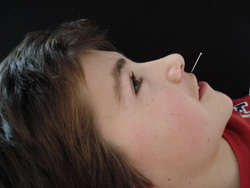
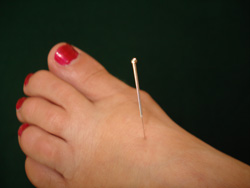
Acute & chronic internal conditions
- Allergies, Sinusitis, Hayfever, Skin, Eczema, Asthma
- Diarrhoea, Constipation, IBS - Irritable Bowel Syndrome
- ME, Multiple Sclerosis, Neuralgia, Fibrositis
- Infertility, PMT, Menopause, Impotence
- Headaches, Migraine
- Earache, Tinnitus, Stop Smoking
Psychological & Emotional conditions
- Depression, Insomnia, Stress, Anxiety, Panic Attacks
Traditional Chinese Acupuncture
Traditional Chinese Acupuncture has been around for more than 4,000 years and is the basis of all other Acupuncture styles throughout the World today. Though this style of Acupuncture has also gone through many generations of refinement and development to get to what it is now.
The main principle is based on the Meridians within the body. Meridians are pathways of energy running throughout the body, this energy is known as Qi. When we are hurt or diseased in any way, this affects flow of Qi as it blocks or diverts the channel flow resulting in pain
After a thorough diagnosis, a Practitioner will insert needles into various Acupuncture points of the body to unblock or strengthen this energy flow. This also tells the body that it needs to help itself and where, thus the body sets about to healing itself.
"Acupuncture does not take effect until the arrival of Qi. This is called Deqi. Inserting the needle into the skin should cause slight or no pain. The needle should go through the first layer of the skin quickly. Deqi can be an uncomfortable sensation once the needle is inserted. When the needle is manipulated (twiddled) the sensation should be as strong as the patient can bear. This is different for each patient." Maria Mercati ©
Signs of Deqi
- Soreness
- Numbness
- Heaviness
- Drawing feeling
- Sensation up or down the energy pathway
- Electric shock
- Feeling of a fish pulling on a fishing line
Maria Mercati ©
Health & Safety for the patient
- Before needling the acupuncturist must wash his/her hands with soap.
- The area around the acupoints must be sterilized with 75% alcohol cotton ball or a propanol swab.
- Only sterile disposable needles must be used. These must be disposed of in a sharps container.
Therapists who are qualified to combine Acupuncture with Tui Na create some of the most powerful medicine available in the world today.
Five Element Acupuncture
An ancient form of Acupuncture which is based upon the principle that there are five elements that affect a person. If any of these elements get out of balance then problems can occur, from pain to disease.
Five Element Acupuncture is about balancing these elements within the body so the body can remain strong, healthy and protected.
A Five Element Acupuncturist can use the Traditional Chinese Meridians (lines of energy running throughout the body) to bring balance back to the body by inserting needles into corresponding Acupuncture points as each of the Meridians are related to an element.
Japanese Acupuncture
There are key differences between Traditional Chinese Medicine Acupuncture & Japanese Acupuncture, the main being:
- The size of the needles: Japanese needles tend to be of a smaller gauge.
- Depth of Insertion: They are inserted very superficially.
- Touch as a means of Pre-Treatment: There is a lot of emphasis placed on palpation (touch) to determine the placement of the needle.
- Less Qi Sensation: Traditional Chinese Acupuncture gives the patient a far greater Qi sensation during the treatment.
- Moxa: Japanese Acupuncturists almost always includes moxa as part of their treatments.
For more information on Japanese Integrative Medicine, please click here
Master Tung Acupuncture
Master Tung Acupuncture has been passed down through an oral tradition but thought to have been around since the Han dynasty. Master Tung was the last of his family to have been passed this style of Acupuncture. He took a limited number of students to teach and pass down his legacy.
This style has over 500 Tung Acupuncture points which are different to the Traditional Chinese Acupuncture. The needles are inserted into areas which correspond to specific and quite different parts of the body to achieve results.
Si Yuan Balance Method (Dr Tan) Acupuncture
Dr Tan (Richard Teh-Fu Tan, O.M.D., L.Ac.) created a system based on Meridian Theory, after years of clinical research and experience he produced the Balance Method of Acupuncture.
This method balances the diagnosed "Sick Meridian" which will be the meridian where the pain is located on the body. The needles are then inserted into a different Meridian based on one of the five different systems within the Balance Method, this results in balance and a reduction of pain being experienced in the sick Meridian. The needles may be inserted a long way away from the pain i.e. wrist pain being treated on the ankle
Dr Tan took on a number of students who have taken over the system since his passing, they are now teaching his system around the world.
Scalp Acupuncture
Scalp Acupuncture is inserting needles into the scalp at various points to affect the motor, sensory and associative areas of the cerebral cortex.
A mixture of Oriental Medicine and Western Medical Knowledge, this system has been known to have been effective with treating patients with paralysis, multiple sclerosis, stroke & brain injuries
Korean Acupuncture
Known as "Sujok", this style of Acupuncture is performed by inserting needles into the fingers and toes. The whole body being reflected in each finger or toe
Electro Acupuncture
Electro Acupuncture is a recent addition to Traditional Chinese Acupuncture which can be used to treat musculo-skeletal and internal disorders.
The needles are inserted into Traditional Acupuncture points used to treat the disorder, these needles are then connected via a wire to a unit which can send very small amounts of electrical charge through the needles. This in turn, will connect two needles together with electrical energy which stimulates not only the Acupuncture Point but also the muscle, tendons and tissue surrounding the problem area.
Cosmetic Acupuncture
Small needles are inserted into the facial area which will help to tone the face muscles and thus reduce lines and wrinkles.
Western Medical Acupuncture (Dry Needling or Trigger Point Acupuncture)
Doctors, Physiotherapists, Osteopaths, Chiropractors, Nurses etc. are able to do a very short Acupuncture training course, mostly in just 2 to 6 days. They mainly perform "trigger point acupuncture" for pain relief relating to musculo-skeletal problems. Most of the Medical Acupuncture Courses do not include any Traditional Chinese Medical Theory or Diagnosis.
Cupping (Fire or Suction)
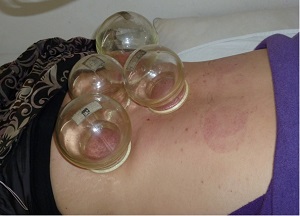
Cupping is the placement of cups over certain parts of the body using Fire or Suction Pump to adhere to the skin. The skin is sucked up into the cup during the treatment. Cupping has been around and practiced for several thousand years and is a safe and simple effective tool to be used within a lot of medicine practices.
Cupping is used to move Blood & Qi throughout the body, remove Wind, Cold & Heat pathogens that may have invaded the Internal System and to remove Stagnation within certain areas of the body.
This can also help to promote healing of muscles, tendons and ligaments, especially after sports which is why this is used by Athletes of many different sports throughout the world.
